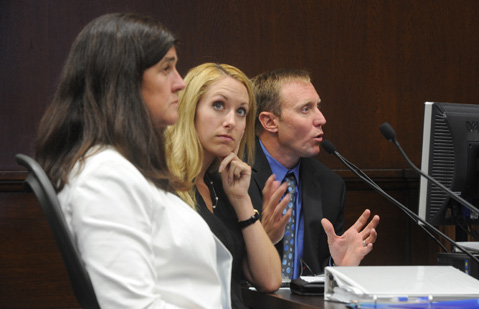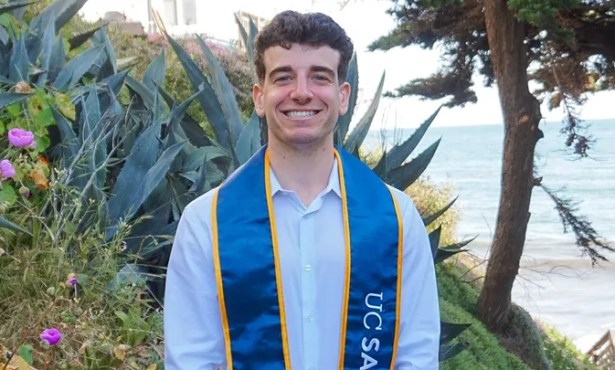Water Conservation Crawl
City Customers Cut Back by 18 Percent

With 82 percent of California caught in the grips of what experts have dubbed “extreme drought” and 58 percent in something even worse — “exceptional drought” — Santa Barbara city water customers picked up the pace of their conservation somewhat, cutting back their use by 18 percent compared to the previous year. While that’s up from last month’s 15 percent, it still remains shy of the 20 percent voluntary reduction target set by the City Council in February.
Ben Pitterle with the Santa Barbara Channelkeeper struggled to sound constructive as he exhorted the council to adopt a get-tough approach on water wasters by enacting mandatory restrictions, not just voluntary guidelines. Twenty percent, he suggested, was not enough, arguing that the voluntary approach yields limited returns; 27 cities throughout the state, he noted, have adopted mandatory restrictions. He also suggested City Hall should increase the money it pays homeowners to replace water-intensive plants with more drought-tolerant species. City Hall is currently increasing its rebates from a maximum of $1,000 per household to $1,100. But by comparison, Pitterle said, Oxnard is offering rebates of up to $3,000 to get its customers to replant.
Councilmember Cathy Murillo also expressed impatience with the 20 percent target, arguing it should be twice that high. If ratepayers conserved by 40 percent, she suggested, perhaps the city would not feel so pressed to recommission its long-mothballed desalination plant at a onetime cost of $30 million. While the council won’t pull the trigger on the desal plant until next April — assuming minimal rains this winter — the environmental studies required to pass regulatory muster with the key state agencies will wind up costing City Hall about $650,000 more than initially estimated. Councilmember Bendy White, the council’s self-appointed drought scold, echoed Murillo’s sentiments, arguing the more aggressively the city conserves now, the better its options will be should the drought persist.
Earlier in the day, acting water czar Joshua Haggmark suggested if the South Coast experiences two more years of drought, the capacity of the proposed desalination plant might need to be expanded beyond the 3,100 acre-feet now anticipated. Haggmark has responded cautiously to calls for more aggressive enforcement actions, pointing out that any such new ordinances — politically extremely unpopular — must first be thoroughly vetted through the city’s exhaustive ordinance process. He promised to provide a blueprint for such ordinances at the council’s briefing on drought policies next month.
In the meantime, city water conservation officer Madeline Ward noted that since February, her office has fielded 450 calls from residents complaining about excessive water use they’d witnessed, chiefly involving sprinkler runoff. The best way to lodge such complaints, she said, was via photo or video accompanied by a date and address. The city’s websites, she said, were equipped to accommodate social media transmissions of such information.
Sitting in the front of the council chambers was retired attorney Stan Hatch — there for another matter — who more than anyone was responsible for the South Coast hooking into the state water system nearly 25 years ago. The wisdom of that decision has come under some revisionist scrutiny as the state water system — for the first time ever — has delivered somewhere between zero and 5 percent of the entitlements for which water agencies belonging to the South Coast Water Authority pay roughly $50 million a year. Even though the city is spending much money and getting no water this year, Haggmark said the state water system is still paying for itself.
The network of pipes and pumps is allowing Santa Barbara to import as much as 4,100 acre-feet of water — a little less than one-third its total demand — from water agencies throughout the state, including one in the Mojave Desert. Without that, Haggmark said, Santa Barbarans would find themselves confronting a water shortfall of 40 percent this year. Thus far, Santa Barbara’s South Coast has been designated by the U.S. Drought Monitor as being in a state of “extreme drought.” Only Santa Maria has been designated as being in “exceptional” drought, a distinction with which that city’s governing officials have taken issue.



